
Transport for London, 2002
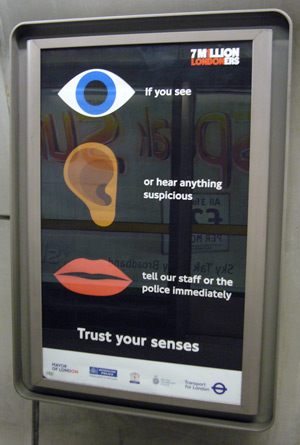
Transport for London, ca. 2007 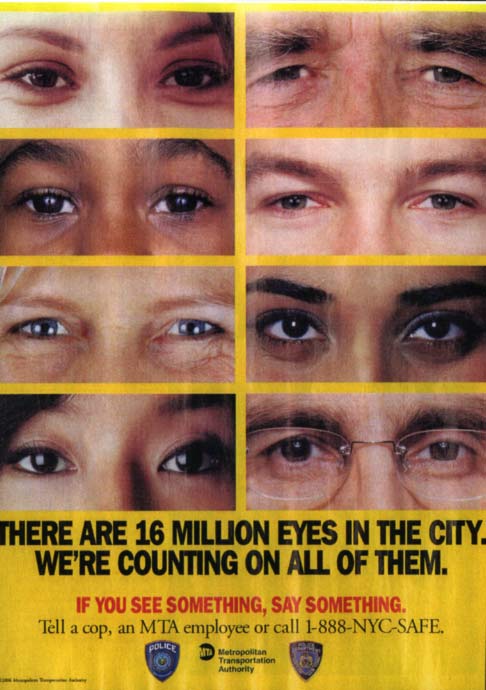
Metropolitan Transportation Authority, NYC, 2007
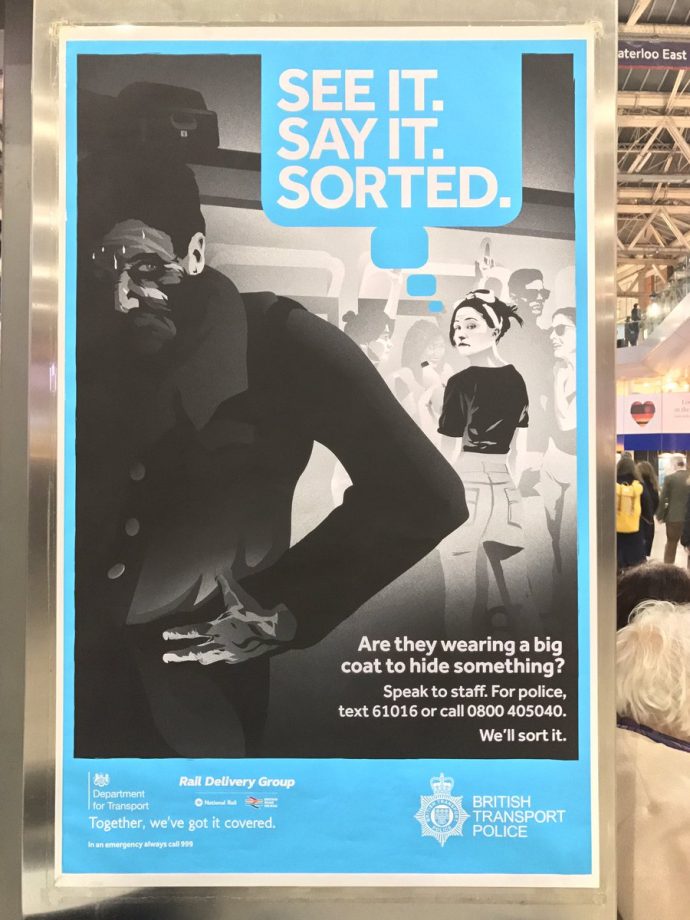
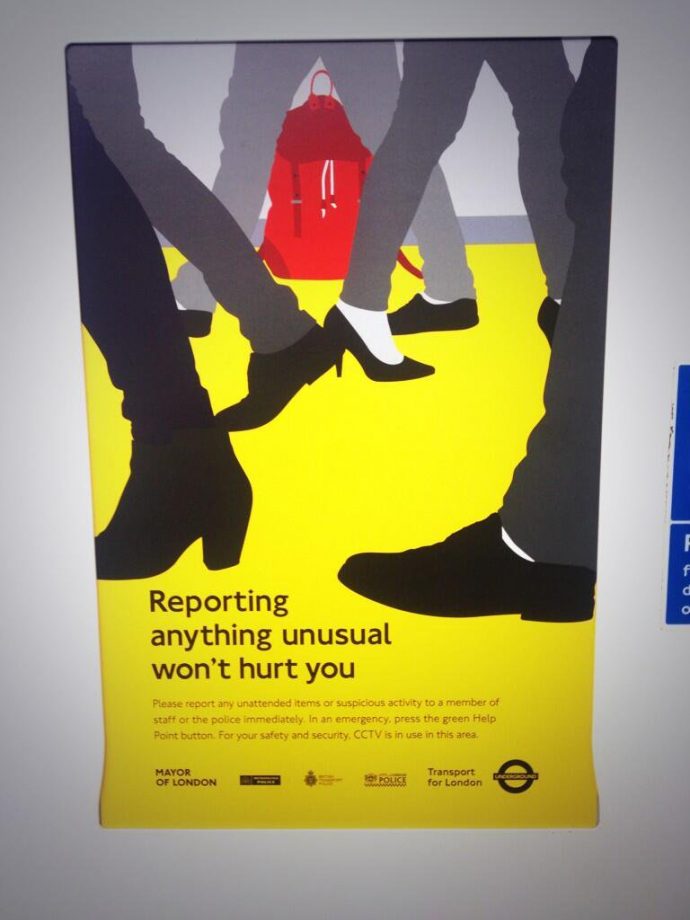
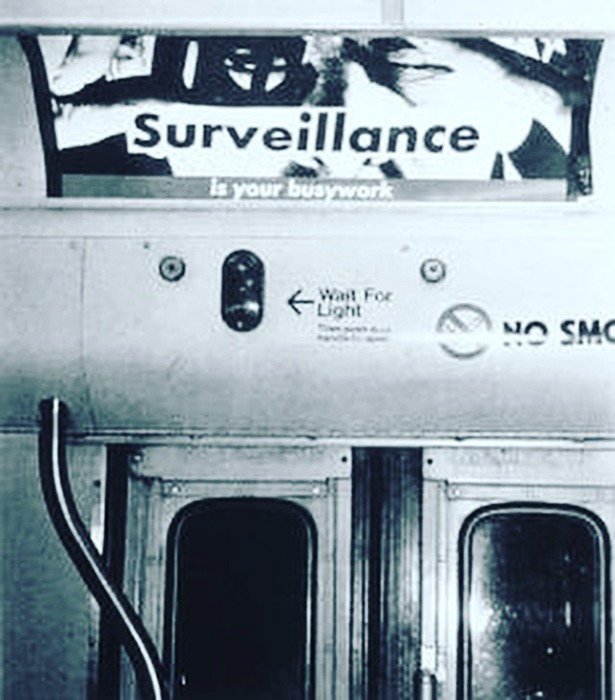
installation view
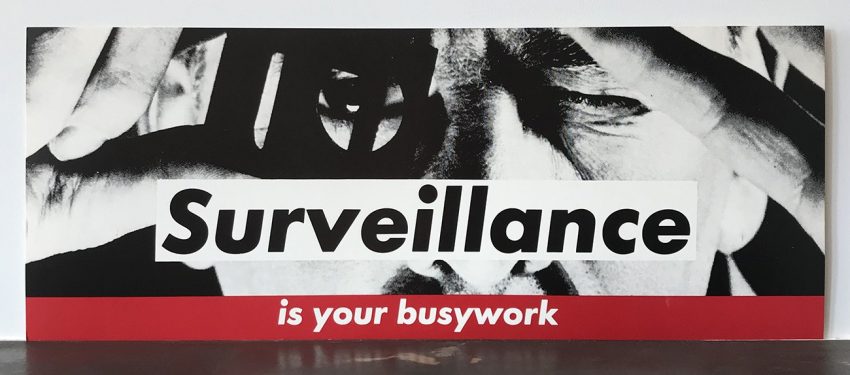





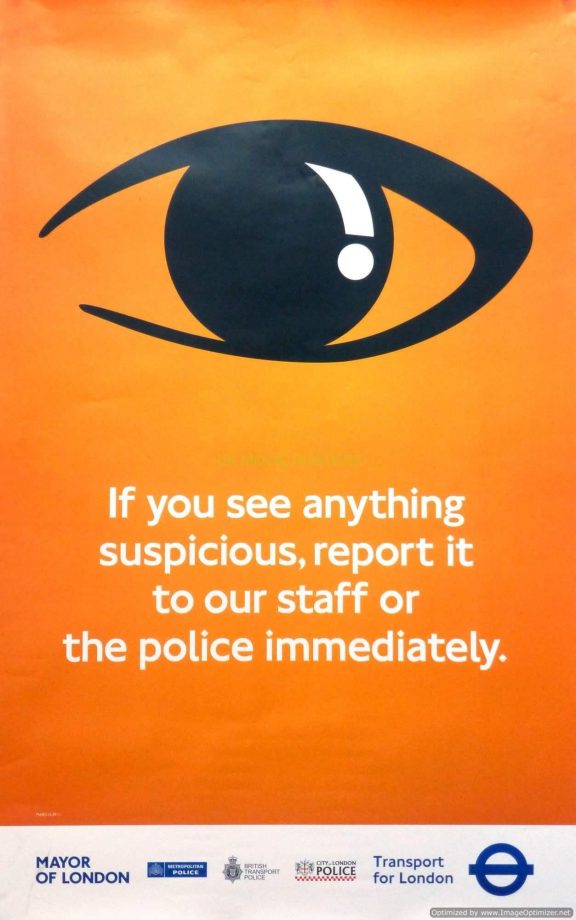
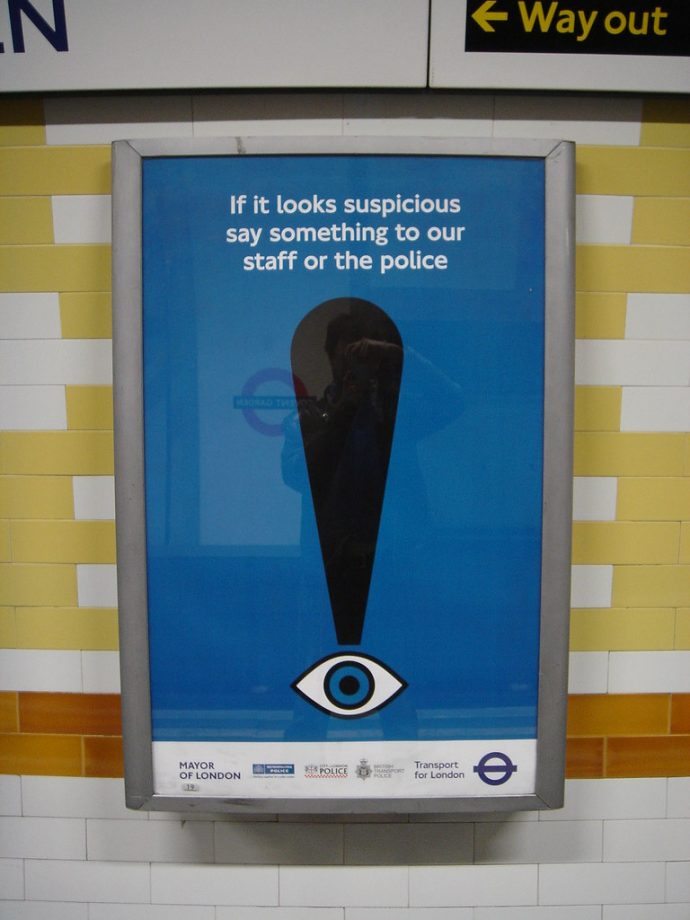


All Cameras Are Police Cameras
Great essay by James Bridle, about the advances in locking down public space.
Surveillance images are all “before” images, in the sense of “before and after”. The “after” might be anything: an earthquake, a riot, a protest, a war. Any system reliant on flow, which is all networks from vehicle traffic to commercial supply to video feeds to the internet itself, view disruptions within the same negative moral context. Surveillance images attain the status of evidence for unknown crimes the moment they are created, and merely await the identification of the moment they were created for. Automated imagery criminalises its subject.
Read on for what happened just walking down the streets of London documenting security cameras.
http://shorttermmemoryloss.com/nor/
I wonder what happened to the imagery here? Strangely drained of colour and, presumably, all meta data.
virtual_group (cologne) and School of intermedia art (hangzhou) present Vision Quest, an event of some (art) exchange and data-Streaming about how being looking forward to seeing (more).With the participation of art Institute of Basic Visual, Johannes AmoroSa, Malgorzata Calusinska, Chen Si, Vera Drebusch, Theresa Krause, Li Ming, Karin Lingnau, Henning Frederik Malz, Ou Wenting, Evelina Rajca, Zhang Jianyun, Zhang YiShen.
coordinated By Deng Yuedream and Susanna Schoenberg.
Juli 3rd 2011, 10 am – 10 pm
Boutique am Ebertplatz 50668 cologne germany
and madein Space 18 wuwei road putuo district Shanghai 200331 china
www.liveStream.com/virtual_group
With a view to developing and disseminating the teaching of Bruno Zevi and his method of critical and historical inquiry, The Bruno Zevi Foundation is holding an international competition to award a prize for a historical-critical essay offering an original analysis of an architectural work or theme or an architect of the past or present.
The competition is open to holders of research doctorates with experience in these fields:
– the key role of space in architecture
– the ancient sources of the modern language
– history as methodology of architectural practice
– the modern language of architecture
– landscape and the zero-degree language of architecture
Essays already published in Italy are not eligible. The languages admitted are Italian, English and French. The prize consists of the publication of the essay and in the invitation to give a lecture on the occasion of the award.
In this edition the Jury is composed of: Alexander Levi, Zeuler Lima, Massimo Locci, Luciana Miotto, Alessandra Muntoni.
Those wishing to enter for the competition are required to provide the Bruno Zevi Foundation with all the documents required by no later than June, 30, 2011 (as attested by postmark).
See more at www.fondazionebrunozevi.it/premio2011/prize2011.htm
Bruno Zevi Foundation
The Bruno Zevi Foundation was created in September 2002. Its purpose is to honor the memory of Bruno Zevi, a stubborn and impassioned advocate of the integration of democratic values and architectural ideas, and to recall his extraordinary work as a critic, historian and thinker.
To this end, the Foundation will encourage and promote the activities of those wishing to devote their energies to the history of architecture, to theoretical studies and practical endeavors in the fields of architecture, urban planning and landscape, and to art in general. With particular reference to young people, it will also endeavor to foster an understanding of the architectural heritage as inseparably bound up with its literary and scientific counterparts in accordance with the unified and decidedly anti-academic view of culture that Bruno Zevi championed throughout his life.
VIRTUAL_GROUP is inviting you to participate in the upcoming broadcast
TUE JAN 11th at 18 CET (17UTC)
WED JAN 12th at 11 CET (10 UTC)
with contributions by media artist Ji Hyun Park, writer Emilia Bianchini.
surveillance and self-surveillance are belonging to the actual setup of understanding and acting public space, intimacy and (tele-)communication, not only between individuals, but also between situations and “formats” of/for space.
The figurative idea of Surveillant Architectures coined by artist Julia Scher, is (maybe?) not just referring to the imperative that,
if you want to “understand” – explore, discuss, maybe practice – surveillance, then you have to “think on” or to “argue with” architecture/s,
but much more that there is a kind of (post historic?) perspective on the issues of public space, intimacy, questioning the privatization of spaces, the publicity of privacy, the defensible attitude of semi-public spaces, the generalized practice of “doing” public opinion – making opinions and preferences public -:
all this could be asked to declare itself as surveillance-related, in a surveillant perspective.
VIRTUAL_GROUP is inviting you to participate in the upcoming broadcast
TUE NOV 30th at 18 CET (17UTC)
WED DEC 1st at 11 CET (10 UTC)
http://www.livestream.com/virtual_group
At the beginning of the 21st Century those changes which were ushered in by cybernetics half a century ago have started significantly to affect man’s sense of his place on the planet. Space and the distances between entities and our human counterparts have shrunken, without however allowing things and people to become better acquainted nor interrelate through heightened closeness of contact.
Media, data programming, progress in understanding, communicating the here and now and the very place of human presence have undergone major transformations giving direction to the future of society. Today therefore it is relevant to query the “figures” cross-linking and alienating human groups, these historic “figures” in social bonding which are today distorted by development in technologies and in digital technology.
European school of visual arts (ÉESI) fulfills its role as overseer and as a higher education academic institution, in analysis, research, educational method and in that artistic creativity best able to lead the way forward on the path to addressing these basic issues.
Together with the University of Poitiers and the Université du Québec à Montréal, the ÉESI and the Espace Mendès-France have devised the launch of a two yearly international multidisciplinary series of meetings from the Fall of 2008, in the form of a think-tank focusing on the “Figures of Interactivity”.
The title of this second Biennial is Memory(Memories). What happens to memory when, after the book, its place seems to be taken by the computer? Is this really so important, after all, and does not the computer free the memory of its obligations to learn “by heart” and to restore the function it had in Antiquity and the Middle ages, that of being a “matrix of cogitation in which memories are moved and gathered in a scheme with random access, a memorial architecture, a library where man spends his time building with the express intention of using it inventively” (Mary Carruthers, Machina memorialis, Gallimard, 2002).
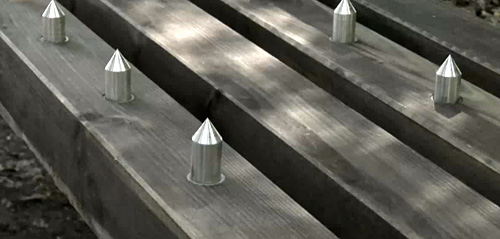
Behold, invention at its most mean-spirited and miserly: a park bench that makes you pay to sit. It might sound like a good way for municipalities to raise a little revenue, but don’t we have municipal taxes for that? How much does it cost, apparently half a Euro buys you some sit time – until an audible alarm warns you that your money is about to run out.
The spikes don’t look like they would be able to skewer anyone, but they would feel uncomfortable enough that you don’t want to stay there without paying.
http://www.uberreview.com/2010/07/pay-sit-park-bench-designer-deserves-a-spike-to-the-butt-or-four.htm
HotHouse Symposium HotHouse is an initiative of the National Institute of Experimental Arts (NIEA), UNSW in association with Object: Australian Centre for Craft and Design and the City of Sydney, a think-tank that brings together leading artists, designers, curators and creative thinkers to develop visions and practical solutions for urban transformation.
HotHouse brings together artists, designers, curators and creative thinkers in a quest to develop models for sustainable environmental change. This “collective experiment” calls upon art and design to offer practical means of transforming spaces, environments, and even cities in ways that are enduring and energising, and that, most importantly, engage all sectors of the community.
The HotHouse think-tank project will be launched by a two-day symposium during which speakers who are experts in their various disciplines will focus on urgent environmental concerns and present cutting edge projects from around the world and generate ideas for sustainable city living.
HotHouse at the Sydney Opera House, 27-28 July 2010, is a “collective experiment” initiated and led by the National Institute for Experimental Arts (NIEA) at UNSW in association with Object: Australian Centre for Craft and Design and the City of Sydney.
With Michaela Crimmin, Natalie Jeremijenko, Jill Bennett, Tony Fry, Bruce Mau ++++